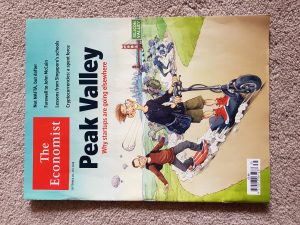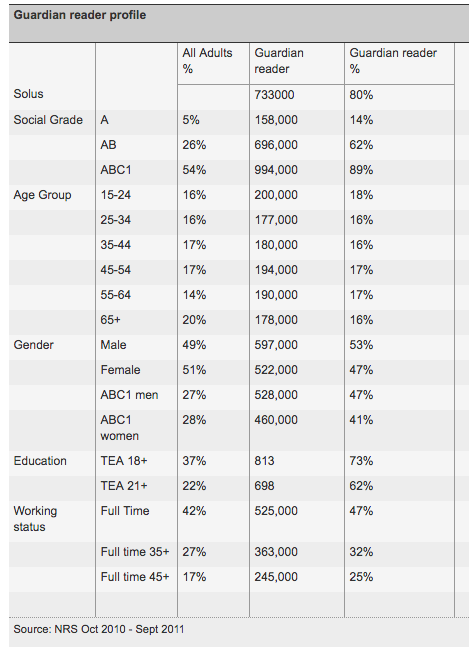Lecture Content
For this, myself, Ethan and Elisha researched information about The Economist and presented this work to the rest of the group, through this we were able to look more closely at how magazines are considered successful. My role involved looking into this specifically as well as the type of content. 
We then looked at the demographic breakdowns (“media packs”) of other magazines and considered who the Yorkie would be aimed at. Thanks to the research I carried out for the previous weeks’ work, I was aware of the three ideals that Johnson and Prijatel consider in order to assess the success and failure of a publication:
- A highly focused editorial philosophy
- A clearly defined formula
- A thorough understanding of and connection with the audience
This was used to help with my presentation, but hopefully is also going to be of use going forward and looking at the Yorkie magazine itself. A magazine needs to be able to sell to its target audience if it is going to stay afloat in the current print sales environment, therefore it needs to be able to maintain the Johnson and Prijatel ideals. When looking at the success of The Economist and its content, I said this:
I would argue that the Economist can be seen as a successful magazine to emulate. Its distinctive cover and tone of voice is something that stands out as something very “The Economist”, the magazine has built a worldwide network of over 1 million weekly subscribers. This indicates a connection with an audience that appreciates the magazine’s efforts to provide an independent and authoritative voice within the political and current affairs sphere.
A magazine with this level of success has clearly gotten there because of its clear and well-known structure, branding and ability to analyse and meet the requirements of its target market. In the next section, I will compare another known media name and its audience analysis to my research for a potential Yorkie reader.
Audience demographics:
In order to create a niche within your market or for a publication to move forward, it must have a clear target market, as you can see in this slightly outdated example from The Guardian:
This data was collected from the readership of the newspaper in order to analyse the audience that it is reaching and see if the correct target is being hit. Knowing this information means that you can when starting out tailor your information to a specific set of people, with specific interests in story content, type, design and medium. For a business already as established as The Guardian it would be helpful to know what audience a publication is reaching to monitor the success of the work that is going out and to adjust the content or not accordingly.
Yorkie Reader Profile:
age band
- I would aim the magazine at young adults, but not especially or exclusively students, perhaps between ages 18 and 30.
- Perhaps thanks to the 2 universities within the city, the 2011 census recorded that York had more 20 to 24-year-old’s than the national average at 10%, meaning it makes sense to target a slightly younger audience.
gender split
- I would aim for a 50/50 gender split within the readership of the magazine.
- According to data from the 2011 census, 48.6% of York’s population is male and 51.4% is female (198, 100 citizens in total, 2011)
ABC1
- Unsure as yet, but as I would aim the magazine at younger readers, perhaps not many of them will have yet reached this higher stage of income (will require more looking into, will add at later date 07/10/18).
- I have since looked into this further and, between the ages of 18 and 29, the average income ranges from roughly £1200 a month – £1800.
Working/studying
- 32.4% of York’s population have a qualification about that of A-level (or equivalent) and the city has two universities.
- A mixture of both would make the readership more well rounded, while I would not want this magazine to be aimed at students, as the team that is creating it is entirely a group of students, it may be that a large percentage of readers are also by extension.
Three words that describe readers of The Yorkie
- Optimistic
- Young
- Woke
